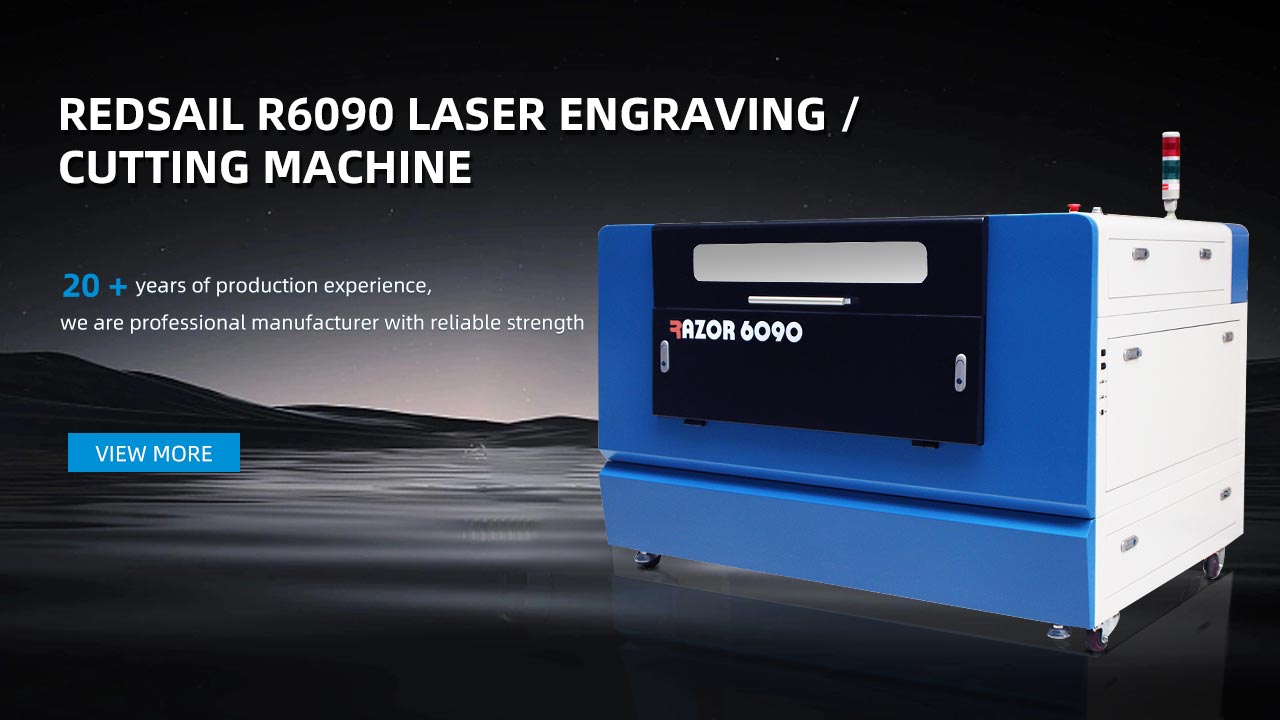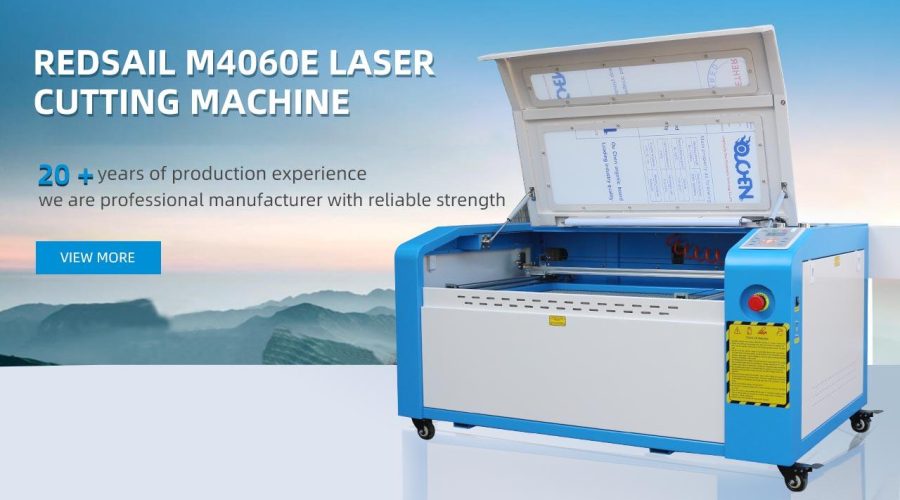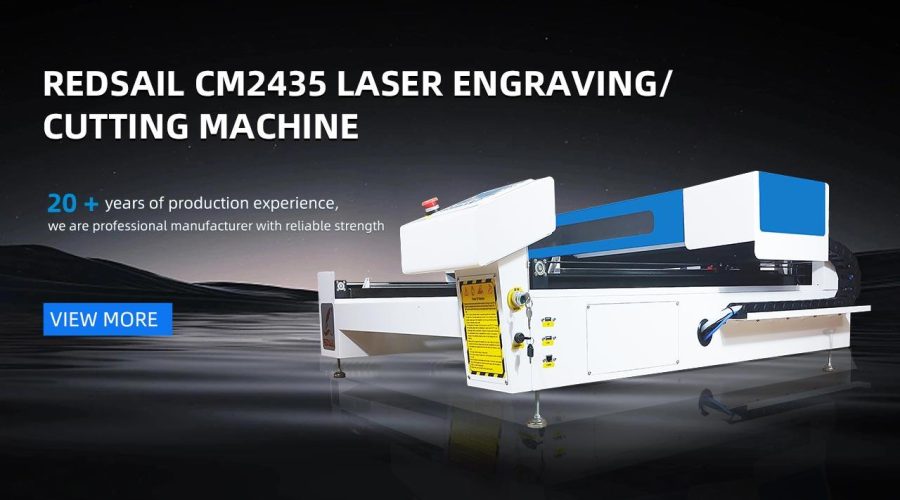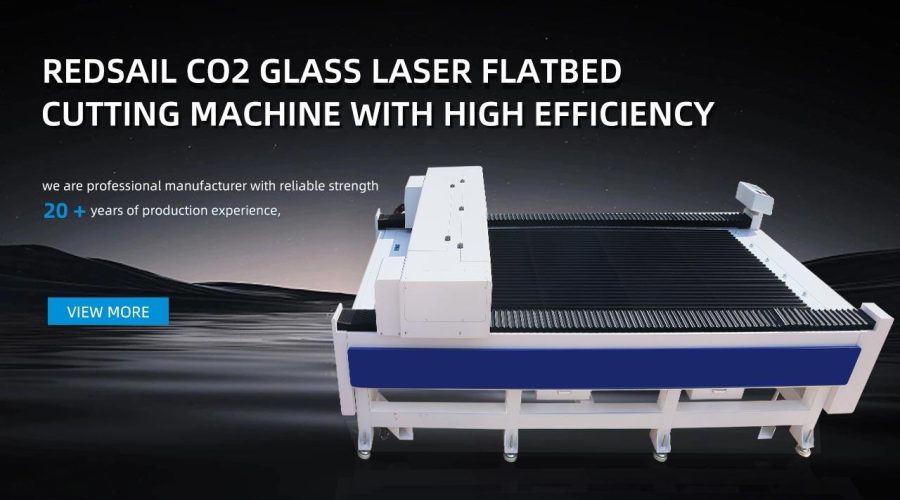First, the performance of gray scale
Ordinary mechanical engraving cannot engrave dots of different thicknesses in an economical way, so it does not have a grayscale representation. The laser engraving machine realizes engraving by means of dots, which has natural advantages in grayscale performance. For this reason, try to use grayscale expression in the engraving design. The advantage of this is that on the one hand, it reduces the coloring process and saves costs; on the other hand, it enriches the means of engraving and increases the level of graphics. When users are using it, first fill the graphics with different grayscales (the text must be converted to graphics first), and choose black and white mode for engraving output. You can try the effect of different dots, and the accuracy generally does not exceed 500dpi.
- Carving materials
- Logs (unprocessed wood)
Wood is by far the most commonly used laser processing material and is easy to engrave and cut. Light-colored woods such as birch, cherry or maple are easily vaporized by lasers and are therefore more suitable for engraving. Each kind of wood has its own characteristics, and some are denser, such as hardwood, which requires more laser power when engraving or cutting. We recommend researching the carving properties before carving unfamiliar woods.
Plywood
Carving on plywood is actually not much different from carving on wood, but one thing to pay attention to is that the depth of carving should not be too deep. The edges of the cut plywood will also turn black like wood. The key is to see which kind of wood the plywood is made of.
Wood carving
Generally speaking, the carving on wood is usually negative carving, and the carving depth is generally required to be deeper. In this way, the power is generally set higher, and if encountering harder wood, the color of the engraved figure may become darker. If you want to make the color lighter, you can increase the engraving speed and try to engrave several times. Certain woods will produce some oily fumes on the surface of the wood during carving. If the wood has been painted with a damp cloth, it can be wiped off carefully with a damp cloth.
Wood cutting
The cutting depth of wood by laser engraving machine is generally not deep. The maximum cutting depth depends on the wood material and the power of the laser. If you want to cut very thick wood, you can slow down the cutting speed, but it may cause the wood to burn. For specific operations, you can try to use large-scale lenses and use repeated cutting methods.
Coloring
After wood carving, there is generally a feeling of being burned. It has a primitive artistic beauty when matched with the wood background color. The depth of its color mainly depends on the laser power and engraving speed. But some woods are usually softer and you can’t change the color anyway (like birch). For the coloring of the finished product, acrylic paints can be used.
- Density laminated panels
Ordinary density veneer
This type of density board is the kind of wooden pallet we often use as sign lining board. The material is high-density board with thin wood grain on the surface. Lasers can be used to engrave on such materials, but the engraved patterns are uneven and black in color, and generally need to be colored. Usually you can use a 0.5mm two-color plate for mosaic to get a better effect with proper design.
Laser-specific density lamination panels
Some density boards are specially designed for laser engraving, and the engraved pattern is uniform in color, and it has a good effect without coloring. clean
The MDF surface can be cleaned with a damp cloth after engraving.
Coloring
Acrylic paint or alkyd paint can be used. When engraving, the graphics color can be set to 60% grayscale, so that the bottom surface of the engraving is somewhat pitted, so as to improve the adhesion of the color.
Acrylic (a type of plexiglass) Acrylic is the most commonly used carving material after wood, it is easy to cut and carve, comes in a variety of shapes and sizes, and is relatively inexpensive. There are two production processes for plexiglass: casting and calendering. Laser engraving machines mainly use plexiglass produced by casting, because the frosting effect produced after laser engraving is very white, which is in sharp contrast with the original transparent texture. The calendering method The plexiglass produced was still transparent after laser engraving, without a sufficient contrast effect. When buying plexiglass, you should emphasize to the dealer that it is a good kind with high purity, otherwise the purchased material may melt when engraving or cutting. Sculpture Under normal circumstances, plexiglass adopts the back carving method, that is to say, it is carved from the front and viewed from the back, which makes the finished product more three-dimensional. When engraving on the back, please mirror the graphics first, and the engraving speed should be fast and the power should be low. If the power is too high during engraving, uneven stripes will appear on the bottom surface. If you want to engrave deeper, you can try engraving several times. In the case of back carving, for partial coloring, the colored part should be carved deeper, and then polished with a flame polishing machine before it can be filled. If it is not polished, the color seen from the front will not be uniform. to cut Plexiglass is relatively easy to cut. If the customer’s requirements are not high, it can be delivered after cutting without flame polishing. Otherwise, the blowing device should be used when cutting to improve the quality of the cut. When cutting plexiglass over 8mm, large-sized lenses should be replaced. Note: The operator must not leave when cutting plexiglass, and there may be flames during cutting. clean The surface can be cleaned with a damp cloth after engraving coloring Acrylic paints can be used, other paints may damage the finish of the plexiglass.
Two-color board Two-color board is a kind of engineering plastic specially used for engraving, which is composed of two or more layers of colors. Its specification is generally 6001200mm, and there are also a few brands with specifications of 600900mm. American POWMRK is recognized as the best product for its stable quality and complete variety. The engraved two-color board is usually used for various signage and name badges. The two-color board can be divided into two categories: mechanical and laser. Some of the mechanical boards can also be used for laser engraving. The characteristics of the laser engraving board: the surface color layer is thin (< 0.1mm) and the laser board is generally 1.3mm&0.8mm. The mechanical board is generally 1.5mm), our experience is: if the surface color of the board is very thin, it can generally be laser engraved, if the surface color is thicker, try engraving twice Sculpture If you use a laser engraved plate, the effect will be very good, with obvious contrast and clear edges. When using a mechanical board with a thinner surface, the engraving effect is not much different from that of a laser board. If you look carefully, the edge may not be as clear as a laser board. Users generally don’t use the kind of mechanical board with thicker surface, otherwise the laser power should be adjusted lower, and the bottom surface can be cleaned as much as possible after repeated engraving, and the final effect may not be very good. On a two-color board with high contrast (such as a blackboard), you can design and engrave a grayscale image. After a large number of engravings, the two-color board itself may be deformed, which can be heated with hot water and leveled by hand. to cut In general, users will ask you to cut the two-color board. If you are using a laser board, you can cut it after engraving. Note that the speed should not be too slow, do not cut through at one time, but should be carried out in three or four times, so that the edge of the cut material is smooth and there is no trace of melting. The power should be just right during engraving and should not be too large to avoid melting marks. If you use a mechanical board, you can only cut it to 50% of the depth, and then cut it by hand and then smooth the edge with sandpaper. If you have a mechanical machine, you can cut it on the mechanical machine first, and then engrave it on the laser machine. clean The surface can be cleaned with a damp cloth or alcohol after engraving. However, it should be noted that if the laser power is set too high during engraving, it may cause a layer of soot that is difficult to wipe off on the surface of the two-color board coloring If the user’s requirements are not high, dots can be used to represent the different colors in the logo. If you have to paint, you should engrave the painted area deeper. You can use acrylic paint or alkyd enamel paint. Other paints may damage the surface finish of the two-color board
Glass Lasers can engrave on glass surfaces, but the engraving depth is not deep and cannot be cut. In general, the laser can form a frosting or shattering effect on the glass surface. Usually users want to get the effect of frosting instead of breaking, the key depends on the texture of the glass and whether the hardness is consistent. Sculpture Glass engraving is usually difficult to control. Follow the steps below to make a relatively smooth frosted surface: Apply a little wash to the area to be engraved, take down a piece of newspaper or napkin that is slightly larger than the area to be engraved, and use water to clean it. Soak the paper completely, squeeze the excess water out of the area, and lay the wet paper on the engraved area without wrinkling. Put the glass in the engraving machine, engrave while the paper is still wet, then remove the glass, remove the remaining paper, and clean the glass surface. Lightly polish the glass surface with 3M’s ScotchBrite if desired. In general, the laser power setting should be lower, the precision should be set at 300dpi, and the engraving speed should be faster. You can try to use a large-size lens for engraving. Note: Be careful when engraving leaded crystals with lasers. Leaded crystals have different expansion coefficients from ordinary crystals, which may cause crystal cracks or breakage during engraving. A lower power setting can avoid this problem, but it should still be kept in case of cracking. clean Use a damp cloth to clean the surface after engraving coloring Can be colored with acrylic paint





